|
(excerpt from Chapter 10 - Banjos, Bohemians and the Barbary.)
And then the dreaded letter arrived that would take Dan away from me too. Willis wrote to tell Daniel that he and William Hearst, the new young publisher of the San Francisco Examiner, were in discussions to design schematics for a proposed San Francisco World’s Fair in 1900. His first assignment was to go to Chicago and meet with the Chief Architect for the 1893 Chicago Columbian Exposition, Daniel Burnham. He was to write and draw a series of articles about the site and bring back ideas and information on cost and construction. He wanted Daniel to join him.
0 Comments
"Daisies still look upward, However dark the hour." 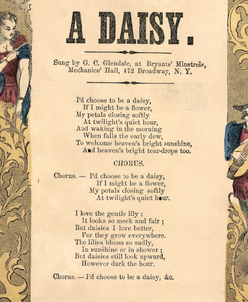 I'd choose to be a daisy. H. De Marsan, Publisher. No. 38 Chatham, Street, N. Y. Monographic. I'd choose to be a daisy. H. De Marsan, Publisher. No. 38 Chatham, Street, N. Y. Monographic. This 19th century song could have been written about Daisy Polk. She was uprooted and replanted throughout her life, and she always looked upward or forward. By any definition, she was resilient. Here are Daisy's thoughts about her name (excerpted from Book One - Chapter 6; Cotillions, Clubs and Courtship; Kansas City: 1887-1889; No-one was more aptly named than I. Daisy was a popular name to be sure. But it fit me as well as any name could. A daisy is the definition of resilience and simple can-do. Where nothing else grows, there will be daisies. From a crack in a busy city sidewalk to a field kissed by the sun and blessed with rich soil, a daisy is a flower that can grow anywhere and thrives despite any and all weather conditions. I had grown up a daisy, whereas my Endemial was the family rose. She needed nurturing and tending to show her best bloom and train her natural beauty and gifts. No amount of tending changes a daisy. A daisy just is. (excerpted from the Chapter Steam, Shadows and Smoke, Book One)
Hot Springs was a curious place in 1882. It was a mixed-up sort of place. Fancy in some parts and so natural, steamy, muddy and messy in others. There were grand hotels, fancy carriages and broad promenades for fine ladies and gentlemen to parade up and down on the Avenue. Then there were the shacks across the creeks, or up the hills that served as reminders of what lay underneath and behind the curtain of finery. It was like being in two different worlds at the same time. For every elegant lady with an ostrich plume in her hat entering a grand Hotel Spa, there was a man on homemade crutches who probably hadn’t eaten in days heading to the free Government Baths for the wondrous cures that were offered. I guess gift-giving is like home building. Who doesn't love a unique personalized gift that says "I carefully chose this for you." And I even give credit to those who just give it their best shot. Because, the thought really does count. Especially, when you can see the thinking behind it!
My brother has a knack for this type of gifting. One year he gave me a refurbished sign I had carved for my grandmothers house. The sign we believed stolen long ago. He found it in a sorry state while clearing brush at the fence-line. Repaired and renewed, it now graces the wall above my doorway. He's given other meaningful, memorable gifts over the years, many Polk drawings and ephemera, but this year was something I didn't even know existed! In 1896 the San Francisco Call newspaper featured an article referring to "Sanchez' bar" in Monterey. The big news was that architect Willis Polk and artist Charles Rollo Peters were prepared to enjoy a drink and view the famous art and writing on the walls when they found the bar with a new name and new ownership. Worse yet, the new owner had destroyed the precious work by painting the walls. The destroyed vignettes were known works by William Keith, CR Peters, Jules Tavernier, Daniel Polk, Albert Bierstadt, John Muir, Ernest Piexetto, Xavier Martinez, Robert Louis Stevenson and many more. Willis was so upset at the destruction, he immediately took a train back to San Francisco.
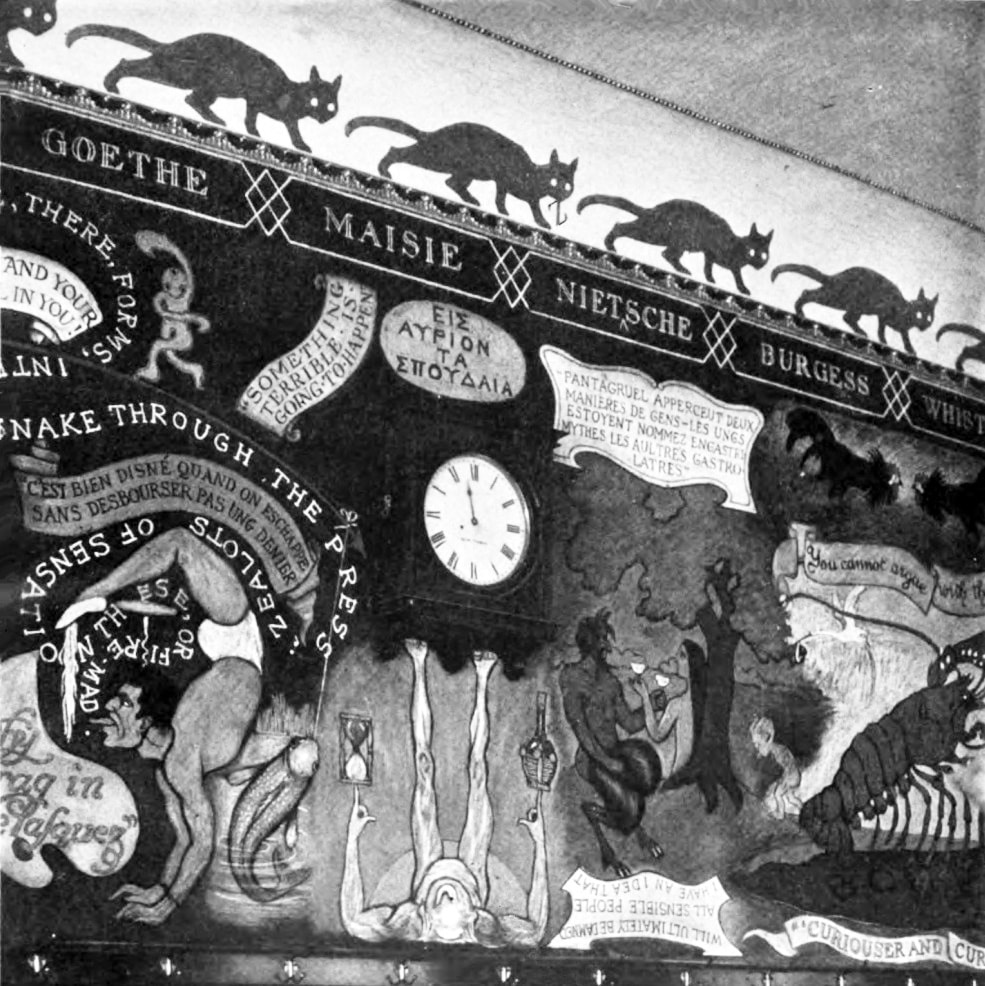 Original Coppa's Restaurant was a legendary bohemian gathering place in the Montgomery (Monkey) Block where the Transamerica Building now stands. Its crowning glory were the wild murals, created by the artists and writers who made the place their second home sitting for hours at the center table in a long, narrow room with 21 tables. The leader of the San Francisco Bohemians was Porter Garnett, a writer, editor, designer and co-creator, with Gelett Burgess, of the 1895 literary magazine The Lark. The group also included the painters Xavier Martinez, Ernest Peixetto, Maynard Dixon, poets and writers George Sterling, James Hopper, sculptor Robert Aiken, Willis and Dan Polk were also frequently in attendance along with many others. The late evening libations were decidedly misogynistic and never included wives. Women were included on occasion if they were pretty enough, or a current girlfriend for a one time review.
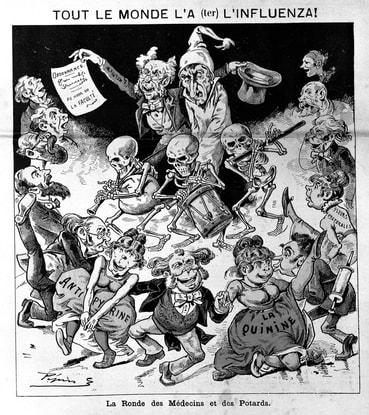 A man with influenza, taken in hand by a doctor, surrounded by dancing politicians. Wood engraving by Pépin (E. Guillaumin), 1889. A man with influenza, taken in hand by a doctor, surrounded by dancing politicians. Wood engraving by Pépin (E. Guillaumin), 1889. Sure, we've all heard about the Spanish Flu - or the Pandemic of 1918 - but what do you know about the Pandemic of 1889 - The Russian Flu? The 1918 outbreak coincided with the Great War and is now known to be an H1N1 virus that spread death across the world. But in 1889, at the height of the Belle Epoque, virology was unheard of. Some scientist now believe the 1889 Flu was the first COVID-19 outbreak. Peculiar observations made during the Russian flu pandemic included the loss of smell and taste not caused by nasal congestion. These and other observations documented in the historical records point more to COVID-19 than to an influenza-like disease. The long recovery period and the frequent neurological sequels mentioned in case reports and following years of fatigue, lack of concentration, depression and anxiety also resemble what is now described as "long haulers or long covid" symptoms. Of particular note is the frequent mentioning of persistent headaches weeks and even months after the acute infection, causing memory issues reported after the 1889 pandemic and now after COVID-19, while such reports are not prevalent after the Spanish flu influenza. And the Russian flu outbreak occurs exactly when EJ, Daisy and Endie Polk were visiting the Exposition Universelle in Paris for the opening of the Eiffel Tower, and then in Milan studying at the Milan Conservatory. Here is an excerpt from the Chapter "Potions, Puccini & Pandemics";
The 1916 Preparedness Parade. courtesy US Library of Congress
Over a century ago, tensions about the war in Europe, labor unrest and the Committee for Law and Order exploded. Quite literally on July 22, 1916, a suitcase bomb killed 10 and seriously injured 40, at the city’s “Preparedness Day” parade—one of the largest parades in the city’s history with 51,000 marchers participating. Everybody seemed to be there including Phoebe Hearst leading delegations of women down Market street. The bomb exploded at 2:06 at Market and Steuart Streets.
The idea behind a “preparedness” demonstration, which also took place in New York and Washington, D.C, was to support the American military in the event of the nation entering World War I - which we did one year later. But many were against this interference overseas, and labor leaders protested it was another get rich scheme for industrialists on the backs of working men. So after the mystery bomb blast left little evidence, the police and government was eager to find the criminals. Immediately socialists, anarchists and pro-labor organizers were targeted. Two labor activists, whom the papers referred to as "radicals", were convicted and jailed then released in 1939 after the police were accused of witness tampering in a mob scene trial. Have you ever thought of Milan as a city of water?
When Daisy first visited Milan in 1889 with her mother and older sister Endemial, the city was surrounded by its 5 working canals. "Bianca made arrangements for our first night supper in Il Centro and suggested we walk along the canals. Milan was a city of tranquil waterways at this time, with barges navigating the picturesque canal-banks. Naviglio means canal in Italian and navigli is the plural and name for the artificial canals of Milan. They were started during Roman times and by the end of the 13th century, water was seen as a way to transport people and objects, like the marble for the Cathedral. Leonardo da Vinci started working on these projects in 1482. This amelioration started the development of a new system of canals that would have made it possible to travel by canal from the Valtellina wine valley in the far North at the border of Switzerland to Milan, had the work been completed. I was lucky to see the City with its waterways intact, as by the 1920’s rail and motor travel saw many of them covered by streets and buildings with just remnants remaining and few signs that Milan had ever been surrounded by water." Read more about Leonardo daVinci's canal designs, why they disappeared and how a growing movement is afoot to uncover them.
Polk buildings from St. Louis, Kansas City, San Francisco and beyond. In writing this book, I have yet to find a complete listing of all the Polk oeuvre. Whether with his family, partners or other artists, I have tried to map these works. It is a work in progress. Am I missing something? Let me know. I'll add it when I have the time ... or find an assistant!
The Polk Map
You will find here extant, demolished or work so dramatically changed I have delineated it from the rest. Click on a marker to see pictures or learn more. The map will pop-out to full screen listing all points. Many points have multiple pictures. Scroll to bottom of text to see all.
With many thanks to the following sources: https://noehill.com/architects/polk.aspx https://www.artandarchitecture-sf.com https://rhnsf.org/explore/walking-tours/russian-hill-summit/walk-notes/ https://opensfhistory.org https://en.wikipedia.org |
Some stories that couldn't make the book in full ... but need to be told! Editors welcomed - sign up below.
STORIES
WR HEARST PLANS SONG: DAISY HOT SPRINGS 1882 A WILLIS POLK GIFT THE RLS CONNECTION 1896 EARTHQUAKE TALES FROM COPPA PANDEMIC OF 1889 THE BOMB THAT SHOOK SF MILAN:CITY OF WATER POLK ON THE MAP FEATHERS, FASHION & FLY FISHING RARE AVIATION FILM - WWI 1914-17 1906 SAN FRANCISCO WTF FILES - TECHNOLOGICAL GET ME OUTTA HERE! NO HORSES, NO TENTS, NO $ DAISY IN FRENCH LITERATURE DAISY ON FILM! THE WHITE DEATH THE SYMBOLISM OF FLOWERS POSTE DE SECOURS WWI TRAVEL 1900: LONDON TO PARIS DAISY: REST IN PEACE KEITH'S, DRANE'S & KENTUCKY MOTHER: MISSOURI COMPROMISE Topics
All
|
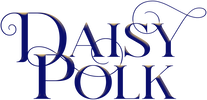

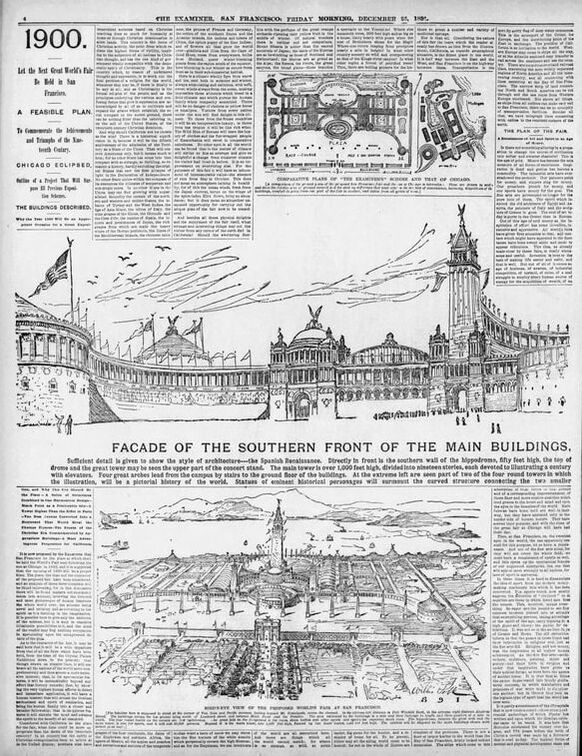
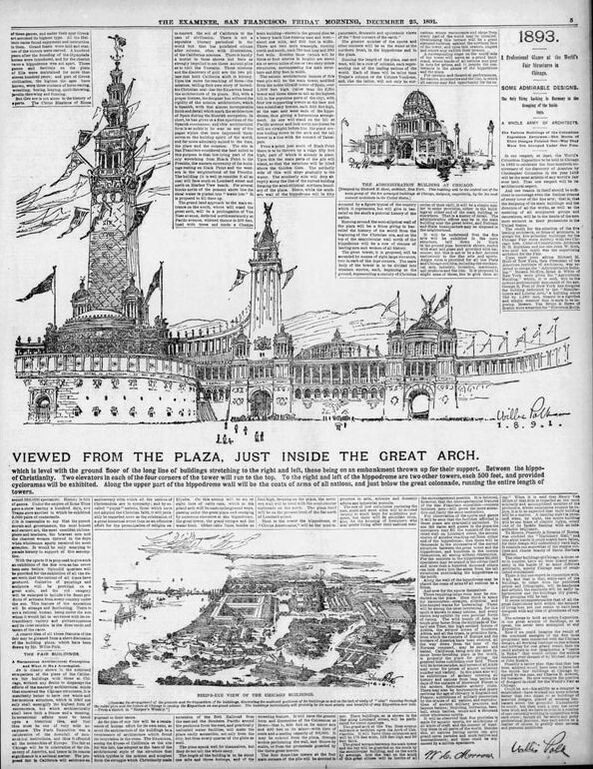
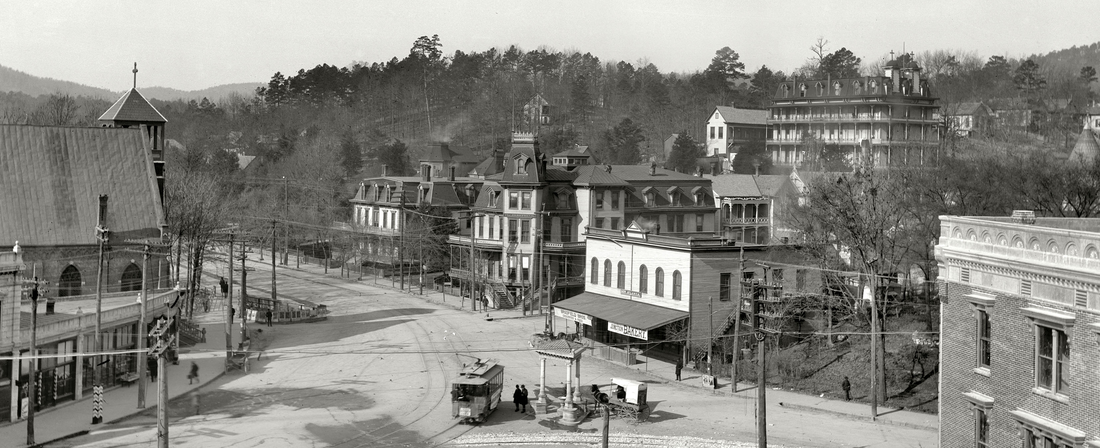
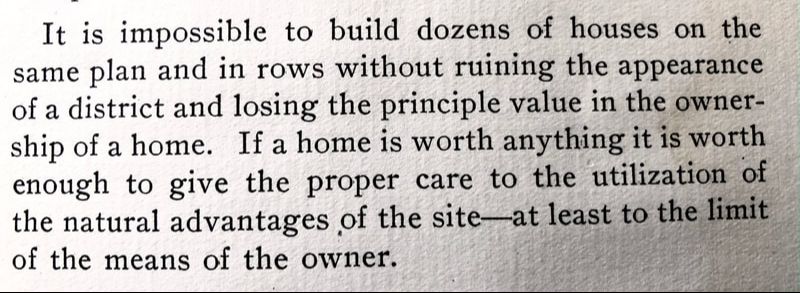
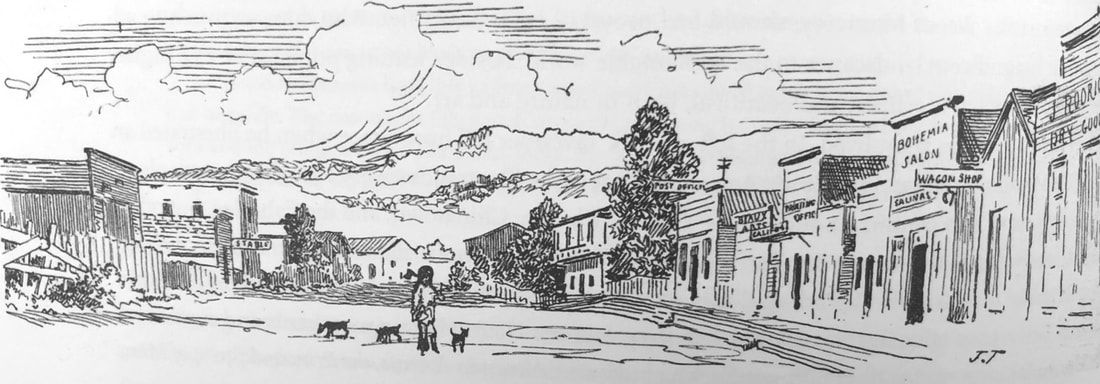
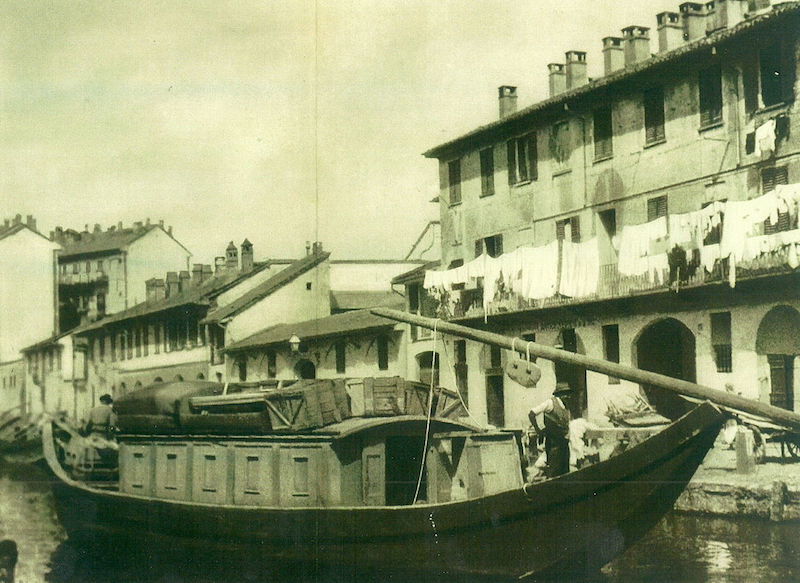

 RSS Feed
RSS Feed